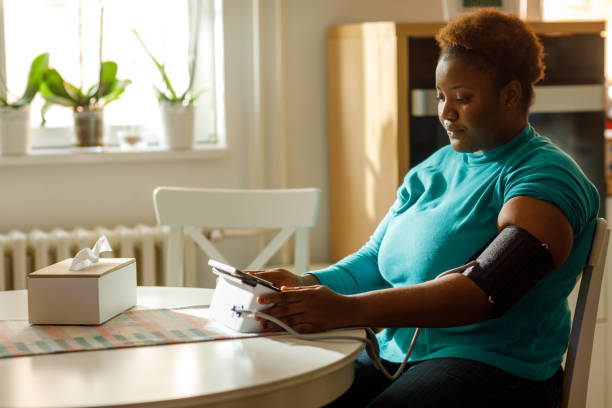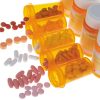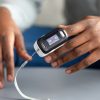- Empty cart.
- Continue Shopping
How to Use a Blood Pressure Monitor at Home

Monitoring your blood pressure at home can be a valuable tool for managing your cardiovascular health. It allows you to track changes in your blood pressure over time and provides useful information for your healthcare provider.
Types of Blood Pressure Monitors
There are two main types of blood pressure monitors commonly used at home:
- Automatic Upper Arm Monitors: These are the most widely recommended for accuracy. They consist of a cuff that wraps around your upper arm and an electronic unit that displays your blood pressure readings.
- Wrist Monitors: These are worn on your wrist like a watch. While convenient, they may be less accurate than upper arm monitors and are generally recommended for people who can’t use arm cuffs due to arm size or other limitations.
Before You Begin
1. Choose the Right Monitor: Ensure that your monitor is appropriate for your needs and has been validated for accuracy. Your healthcare provider can recommend a suitable model if you’re unsure.
2. Select the Right Cuff Size: If using an upper arm monitor, choose a cuff that fits your upper arm’s circumference. An ill-fitting cuff can lead to inaccurate readings.
3. Prepare Yourself: To get the most accurate reading, follow these guidelines:
- Avoid caffeine, tobacco, and exercise for at least 30 minutes before taking your blood pressure.
- Sit quietly and relax for 5-10 minutes before measuring your blood pressure.
- Use the bathroom if needed, as a full bladder can affect readings.
4. Remove Tight Clothing: Make sure the cuff can be placed directly on your bare skin or over lightweight clothing.
Taking Your Blood Pressure
Follow these steps to accurately measure your blood pressure:
1. Position Yourself: Sit in a comfortable chair with your feet flat on the floor and your back supported. Rest your arm on a flat surface like a table so that your upper arm is at heart level.
2. Apply the Cuff: If you’re using an upper arm monitor, slide your arm through the cuff’s loop and position it so the bottom edge of the cuff is about one inch above your elbow crease. Make sure the cuff is snug but not too tight.
3. Locate Your Pulse: If your monitor requires it, locate your radial artery on the inside of your wrist or your brachial artery on the inside of your upper arm. You can use these locations to help guide cuff placement.
4. Turn On the Monitor: Start the monitor following the manufacturer’s instructions. The monitor will typically inflate the cuff automatically and display your blood pressure reading on the screen.
5. Stay Still and Quiet: While the monitor is inflating and taking the reading, remain still and refrain from talking or moving your arm. This ensures the most accurate measurement.
6. Record the Reading: Once the measurement is complete, the monitor will display your systolic (the top number) and diastolic (the bottom number) blood pressure. Record these numbers, along with the date and time.
7. Repeat If Necessary: For the most accurate reading, it’s recommended to take two or three readings, spaced a minute or two apart, and then average them.
8. Review and Share: Share your blood pressure readings with your healthcare provider during your regular check-ups or as instructed. They can help interpret the results and make any necessary recommendations for managing your blood pressure.
Tips for Accurate Readings
- Avoid talking during the measurement.
- Sit with your back straight and supported.
- Do not cross your legs during the measurement.
- Keep your arm still and relaxed.
- Take your blood pressure at the same time each day for consistency.
- Avoid taking readings immediately after consuming caffeine or alcohol.
- Keep a record of your measurements, including any lifestyle changes or medications, to share with your healthcare provider.
In Conclusion, Regular monitoring of your blood pressure at home is a proactive step in maintaining good cardiovascular health. By following these steps and adhering to best practices, you can obtain accurate readings that help you and your healthcare provider manage your blood pressure effectively. Remember that blood pressure can fluctuate throughout the day, so consistency in measurement conditions is key to meaningful monitoring.








